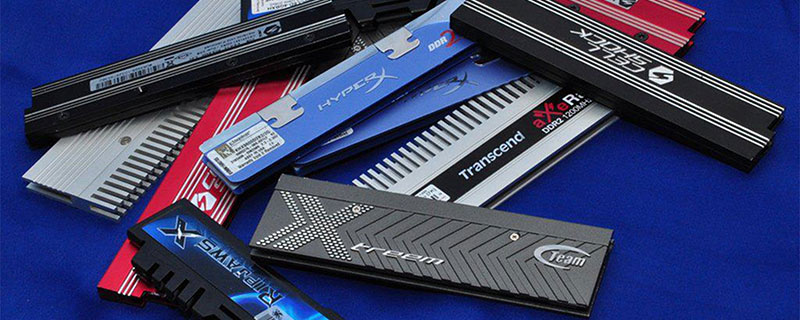
When purchasing a computer, a lot of users don’t give much thought to RAM, even though it can seriously affect performance—positively or negatively. This three-part guide provides an overview of what to look at when you go shopping.
Know your system
First of all, each platform has its quirks. Just because you buy a DDR4 4600 MHz kit doesn’t mean that your platform will let you run the memory with such speed. There are four important points to consider here.
- Maximum memory speed is limited if you buy a CPU with a locked multiplier. The CPU manufacturer specifies what RAM speed is supported and generally, there are no workarounds for this limitation. If you want to squeeze more performance out of your PC with locked processor, opt for modules with tighter timings (look for CL – the lower the number, the better).


- Even if you have an overclockable CPU, RAM speed is highly dependent on the capabilities of the CPU’s IMC (Integrated Memory Controller). As in CPU frequency overclocking, your mileage may vary from piece to piece even with the same processor model. So, just because somebody achieves a 4400 MHz DDR4 speed using one processor model doesn’t mean you’ll be certain to run your RAM with the same speed with the same CPU model.
- Maximum RAM clocks are platform specific. Some platforms just don’t work with high RAM frequencies. Intel Sandy Bridge architecture is a good example. Good luck trying to run it with DDR3 at eg. 2933 MHz. Also, complex platforms with many memory channels like Intel’s X299 Skylake-X CPUs aren’t capable of running very high memory clocks.
- Finally, there is the motherboard itself. The mainboard layout and BIOS are very important. Motherboards can feature a T-Topology or Daisy Chain connection of DIMM slots to the CPU.
T-Topology works better with all 4 DIMM slots occupied. Daisy Chain, for its part, offers better overclocking when 2 DIMM slots are used. Please note that we are talking here about the most common motherboards with 4 DIMM banks (mainstream platforms like AM4 / LGA1151 with 2 memory channels, each featuring 2 DIMM slots).

There are also motherboards with a single DIMM slot per channel. This doesn’t automatically make them great in terms of memory overclocking (OC). Everything is about how well the traces are laid out. If this feature is executed correctly, such a board can provide noticeably higher RAM OC.


The different topologies are nicely described here:
Speed is not always the answer
Clocks are very important, but you should also watch the timings, as they too contribute to performance. In terms of clocks, a higher MHz number will mean higher performance, but timings work the other way around – the smaller the numbers, the better.
The timings can also be an indicator of RAM quality and overclocking potential. Eg. DDR4 3200 MHz CL16 modules are rather mediocre spec-wise, and I wouldn’t expect any great overclocking potential from them. The 3200 MHz CL14 kit, on the other hand, should have a lot more to offer, while something like 3200 MHz CL18 is probably garbage.
You should be aware that each application/game behaves differently. Some work faster with tighter RAM timings and some don’t mind timings too much. In some scenarios, 3000 MHz CL15 can prove faster than 3400 MHz CL17, though clocks are usually more important performance-wise. Of course, if the timings are very loose, it will noticeably hinder the performance even if the clocks are high.
With knowledge of your platform quirks and your budget limitations, you’re probably best advised to balance memory speed and timings.
Tip: If you check your memory speed in CPU-Z software, be wary that it presents real RAM clocks. Eg. 1600 MHz in CPU-Z means that your RAM is working at 3200 MHz. The reason is simple: DDR means Double Data Rate. So you double the clocks.

Tip 2: Desktop users are accustomed to plugging in a memory kit with nearly every possible speed to the motherboard and expecting it to run. Even with the Sandy Bridge platform, when you plug in a DDR 2933 MHz stick, which have no way of working with such speeds, the PC should figure out what to do, boot up (albeit at slower DDR clocks) and just work.
With notebooks, it’s usually not so straightforward. It is common that if you plug in an even slightly faster RAM than factory installed, you’ll be greeted by nothing more than a black screen. To avoid such scenarios when upgrading RAM in mobile devices, opt for a module that features the same speed as the original ones. Note that this doesn’t concern some high-end models like Alienware, which are closer to desktop PCs than normal notebooks and can handle overclocking.
The more the merrier?
Nowadays for even the simplest PC I wouldn’t go below 8 GB of RAM. If yours is going to be a gaming and/or universal machine, I strongly recommend 16 GB. 32 GB and more would be usable only if you have special needs or want to set up a RAM disk. For example, Adobe Premiere has an enormous appetite for memory. With Full HD projects, it can easily consume 30 GB of RAM. 4K video editors may reasonably call for even 64 GB.
Of course, how much RAM you need and how much RAM the mainboard can support are two different things. Always check the motherboard manual for that information.
Software limitations on available RAM may also be an issue. Nearly everybody today goes for a 64 bit system. But if you stumble across a 32 bit (X86) system, don’t be surprised to see 4 GB RAM (or less) reported by the OS even if there is much more installed. And there is no other workaround for X86 limitations than to install an X64 system.

Also keep in mind the limitations of some Windows 7 versions. Home Basic won’t detect more than 8 GB of RAM while Home Premium tops out at 16 GB. If you want to go beyond that (up to 192 GB), you need one of the three other versions available: Professional, Enterprise or Ultimate.
Windows 10 has quite a leg up on 7: Home version supports up to 128 GB while the Pro and Enterprise/Education versions will detect a whopping 512 GB RAM.
For users of motherboards with a single RAM slot for each channel, there are special double-stacked RAM modules with high capacities. But they aren’t cheap and are much taller than standard sticks. They also have very limited compatibility. But if you are among the few users of such motherboards, this option might be worth considering.

Part I Takeaway
- Stick to 64 bit operating systems.
- If you are a typical user of a mainstream platform, go for 16 GB of RAM.
- For users of new unlocked processors, 3000 MHz – 3466 MHz kits with a CL around 16 should be the sweet spot between performance and price. With locked CPUs, go for the fastest modules your CPU can handle, according to manufacturers specifications. As for notebooks, you’re best off sticking with the RAM speed your device came with out of the factory.

















